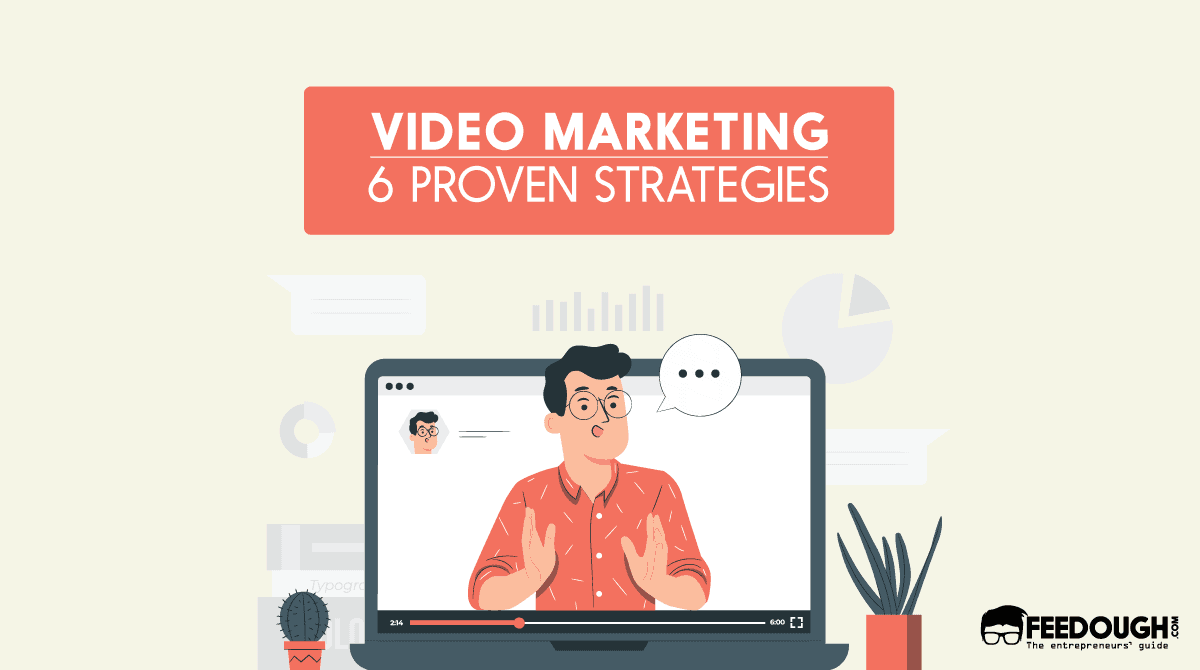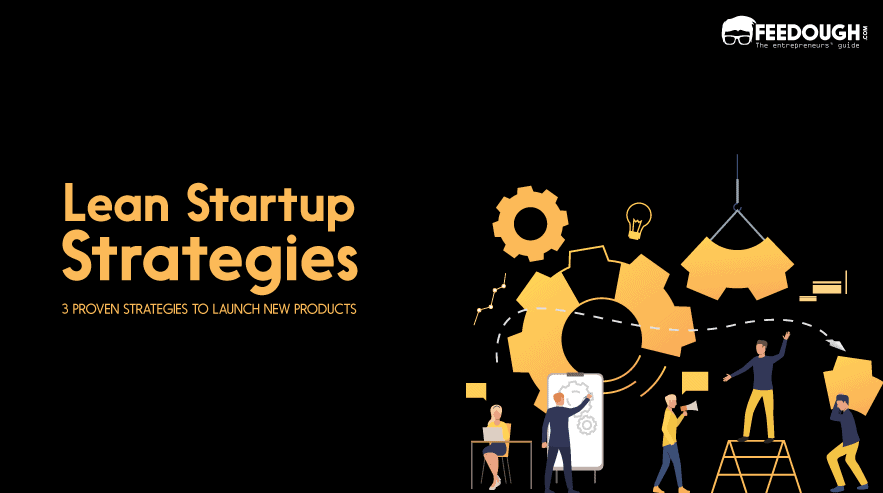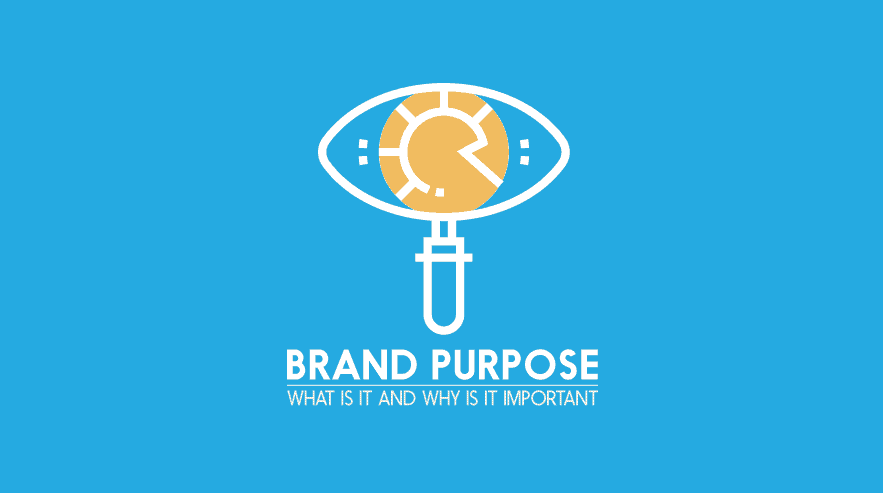Building a software is hard enough, but getting people to actually buy and use it is an entirely different challenge. How do you get people to find your product? How do you convince them to download it? How do you get them to keep using it?
Developing a marketing strategy for your software can seem daunting, but it doesn’t have to be. In this guide, we’ll walk you through everything you need to know about how to market your software, from building your funnel to getting more sales.
But before we dive in, let’s answer a few common questions about software marketing.
What Is Software Marketing?
Software marketing is the process of promoting and selling a software application. This can be done through various channels, such as online advertising, PR, and content marketing.
You can think of it as the process of getting people to aware of your software, interested in using it, and then finally using it. But it doesn’t stop there. Once people start using your software, you need to keep them engaged so they renew their subscription and recommend it to others.
Why Is Software Marketing Important?
Your software might be the best in the world, but if no one knows about it, you’re not going to make any sales. That’s why software marketing is so important. It’s what will help you get your software in front of potential customers and convince them to buy it.
Moreover, software products don’t rely on one-time sales anymore. They are recurring and the customer has the choice to choose the competitor when their subscription ends. This means that you have to continuously market your software to keep the customers you have and acquire new ones.
How Do You Market Your Software?
First thing’s first: you need to work on three important aspects of your software marketing strategy.
Developing A Buyer Persona
A buyer persona is a semi-fictional representation of your ideal customer. It includes information like your customer’s demographics, interests, pain points, and goals.
You develop this persona by conducting market research, surveys, and interviews with your target market. Almost all of your marketing efforts rely on your buyer persona, so it’s important to take the time to create one that’s accurate.
However, know that while B2C clients fit true to your buyer persona judgements, B2B clients have a completely different consumer behaviour. They make decisions keeping in mind the company’s budget, ROI, impact on other departments within the organisation, etc.
To get the most of them, you need to understand the four types of consumer buying behaviour as well. These are:
- Complex buying behaviour: It involves high-risk decisions and is characterised by extensive research. Here, the buyer carefully weighs all pros and cons before making a purchase.
- Dissonance-reducing buying behaviour: This type of behaviour is seen when the buyer is unsure about what they need. They often seek others’ opinions (such as family, friends, or colleagues) before finalising a purchase.
- Habitual buying behaviour: Here, the consumer buys a product out of habit or because it’s convenient. For example, people usually choose Ms. Word as their go-to document editor because it’s what they’re used to.
- Variety-seeking buying behaviour: This is when the consumer looks for new products or brands even if they’re satisfied with what they currently have. They’re often influenced by advertising, peer pressure, or a desire to try something new.
Although most consumer buying decisions are a mix of all three behaviour types, understanding which one dominates can help you create more effective marketing campaigns.
For example, if your target market comprises of mostly habitual buyers, you’d need to develop a campaign that aims to bring out faults in the competition’s product or brand. On the other hand, if you’re targeting variety-seeking buyers, you might want to focus on creating a sense of excitement or urgency around your product.
Value Proposition
A value proposition is a promise of value to be delivered. For example, Adobe Photoshop doesn’t just promise to edit photos (feature), it promises “to transform your photography” (value proposition).
Your customer should be clearly able to see how your product is going to make their lives better or easier.
You find your software’s value proposition by doing a market research and filling up the value proposition canvas.
The value proposition canvas has two segments with 3 sections each. The first segment focuses on your customer –
- What jobs are they trying to do?
- What pains are they experiencing?
- What gains do they desire?
The second segment focuses on your product –
- What products/services are you offering?
- How do these products/services solve the customer’s pains?
- How do these products/services enable the customer to gain their desired gains?
Once you have your value proposition defined, it’s time to start working on building your marketing funnel.
Building Your Marketing Funnel
Your customer doesn’t make instant decisions. They go through a process that starts with awareness and ends with purchase.
You need to be there at every stage of this process, providing them the information they need to make an informed decision. This process is called a marketing funnel (or AIDA funnel), and it looks something like this:
- Awareness: The customer becomes aware of your offering. Prior to this, they didn’t even know that you existed. A usual “awareness” story is them searching Google for a solution to their problem and finding your or someone else’s blog post mentioning about you, or hearing about you from a friend.
- Interest: If they like what they see, they start to develop an interest in your offering. They might visit your website, read more blog posts, or watch some of your videos. The interest phase is where they start to get more familiar with you and what you’re offering. This is where they usually land on your landing page and learn more about the features of your product.
- Consideration: If they continue to like what they see, they’ll start considering your offering as a possible solution to their problem. They might compare you to other similar offerings on the market, read online reviews, or talk to someone who’s already using your product.
- Desire: Your product has passed the test and they’re now ready to buy. The only thing left is for you to close the deal. Now, this is where special offers, discounts, and free trials come in to play. Even upselling and cross-selling techniques can be used at this stage to increase the value of the sale.
- Action: Finally, they take the plunge and buy your product.
Convert this journey to your side of the coin and you’ve got the basics of your sales funnel. But know that a typical software marketing funnel doesn’t end there – unless you’re only charging a one-time fee.
Marketing Your Software
“If you build it, they will come.”
This line is often attributed to Field of Dreams, but it’s also something that a lot of software entrepreneurs believe. They think that if they create a great product, people will flock to it and buy it without any effort on their part.
But the truth is, even the best products need to be marketed in order to sell. In fact, many times, the products that sell the best are not necessarily the best products – they’re just the ones that have been marketed the most effectively.
So how do you market your software and create demand for your offering? Here’s a quick overview of some of the most effective methods:
Top Of The Funnel Marketing Strategies
The customers at the top of the funnel are the ones who are just becoming aware of their problem. They lack information and they’re just starting to look for solutions. Your job at this stage is to educate them about their problem and show them that your software is a possible solution.
You can do the same using the following techniques:
Content Marketing
Blog posts, educational videos, and listicles are all great content marketing pieces that can help you reach your target audience. The key is to create content that is relevant to their needs and that provides value.
Focus on:
- Maintaining an educational blog: Don’t just blog about your software, but also about the industry and the problems that your target audience faces. Do keyword research to ensure that you’re using the right keywords so that your target audience can find your content.
- Creating helpful videos: Your customers are more likely to watch a video than read a long blog post. So, create videos that not only answers your customers’ top of the funnel queries (like “how to add music to video on iphone?” or “what is the best video editor for youtube videos?”), but also establish your brand as an opinion leader in the space.
- Develop content for other existing content channels: Guest posts, infographics, and other long-form content can help you get in front of a larger audience. Work with other companies and publications in your industry to get your name out there. You can even pay to have your content featured on high-traffic websites that rank for relevant keywords. For example, paying XYZ website to list your brand amongst the top 10 of your industry could really help you get more eyes at the top of the funnel level. marketing tools could result in a lot of high-quality leads.
Paid Advertising
Probably the most direct way to increase leads from the top of your sales funnel is to invest in paid advertising. Search engine advertising (Google AdWords) and social media advertising (Facebook Ads, LinkedIn Ads, Twitter Ads, etc.) are both effective ways to reach your target audience and get them interested in what you have to offer.
For example, let’s say you own and market a SaaS platform that helps businesses manage their social media accounts. You could run a Google AdWords campaign targeting keywords like “social media management software” or “best social media management tools.” Similarly, you could create a Facebook Ads campaign targeting people who work in marketing or have an interest in social media.
But you advertisement should always be supported by a landing page, where you provide more information about your product and try to persuade the visitor to move further down your funnel.
Influencer Marketing
Your customers rely on the opinions of others before they even consider doing business with you. And in today’s world, that means they’re looking to social media to see what their peers are saying.
That’s where influencer marketing comes in.
Influencer marketing is the process of working with popular social media users to educate their followers about your brand and generate leads.
It’s an effective way to reach potential customers, because people are more likely to trust a recommendation from someone they follow than an advertisement.
Middle Of The Funnel Marketing Strategies
The middle of the funnel is where your potential customers start to take more notice of your brand and consider doing business with you.
At this stage, they’re already aware of how they are willing to spend their money, but they’re not sure which product or service is the best fit.
This is where you need to establish your brand’s identity and position yourself as the best solution to their problem.
Some effective middle of the funnel marketing strategies include:
Social Validation
When potential customers see that others are using and enjoying your product, they’re more likely to want to try it themselves.
This could come in the form of user reviews, social media posts, or even celebrity endorsements.
You can also use social validation to address any objections they may have by featuring customer success stories.
Email Marketing
If your funnel movement is effortless, most of the prospects from the top will eventually be converted into leads that are further nurtured during the MOFU stage. Email marketing helps you nurture these leads in a more personalised way so that they’re more likely to convert into paying customers.
You can use email marketing to:
- Send offers and coupons
- Educate leads about your product
- Nurture relationships with leads
You can also use email marketing metrics to segment your leads so that you’re able to send them more targeted content that’s relevant to their specific needs and interests.
Bottom Of The Funnel Marketing Strategies
The final stage of the software marketing funnel is the BOFU, or bottom of the funnel. At this stage, your leads have been fully nurtured and are now ready to be converted into paying customers.
There are a few different marketing strategies that you can use at the BOFU stage, including:
Product Demos
One of the best ways to convert leads into customers is to give them a product demo. This will allow them to see first-hand how your software works and how it can benefit them.
You can create knowledge base articles, video tutorials, or even live webinars to give potential customers a taste of what your software has to offer.
The best demos, however, are usually done one-on-one. This allows you to address any specific questions or concerns that the lead may have. Plus, the personalised approach can help build trust and confidence in your product.
Free Trials Or Freemium Products
If you have a good licensing solution, you can offer free trials to those who are on the fence about your product. This is a great way to get people using your product so that they can see the value for themselves.
You can also develop your business model in such a way that you offer a basic version of your product for free and then upsell customers to the premium version. This is often called a freemium model and it can be quite effective in getting people to use and pay for your product.
The Do’s & Don’ts Of Software Marketing
When it comes to marketing your software, there are a few things that you should keep in mind. Here are some dos and don’ts to help you make the most of your marketing efforts:
Do’s
- Use multiple marketing channels to reach your target market.
- Develop a comprehensive and detailed marketing plan.
- Make sure your website is optimised for search engines.
- Create interesting and informative content to attract potential customers.
- Use social media to reach a wider audience.
Don’ts
- Try to do everything on your own – delegate tasks and responsibilities to others.
- Neglect your landing pages – they are essential for conversion.
- Forget to measure your results – you need to know what’s working and what’s not.
- Stop marketing once you’ve made a sale – keep the momentum going.
Bottom-Line?
Developing an effective software marketing strategy is essential if you want to make your software business a success. However, it’s not always easy to know where to start. By following the tips above, you can give yourself a solid foundation on which to build your marketing strategy and ensure that you’re making the most of your marketing efforts.
Go On, Tell Us What You Think!
Did we miss something? Come on! Tell us what you think about our article on software marketing strategy in the comments section.
A startup consultant, digital marketer, traveller, and philomath. Aashish has worked with over 20 startups and successfully helped them ideate, raise money, and succeed. When not working, he can be found hiking, camping, and stargazing.
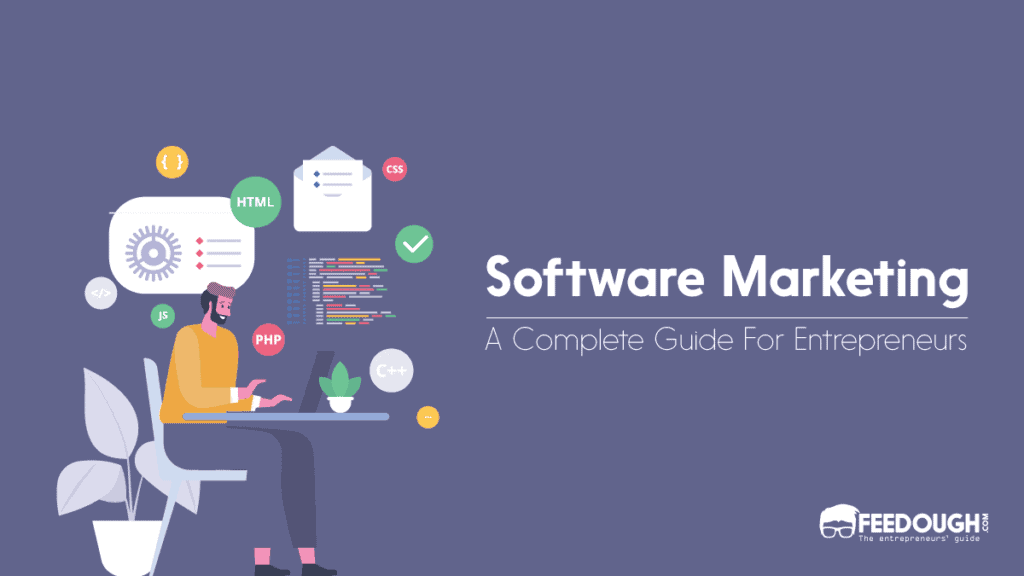
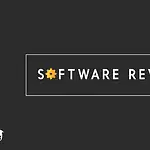
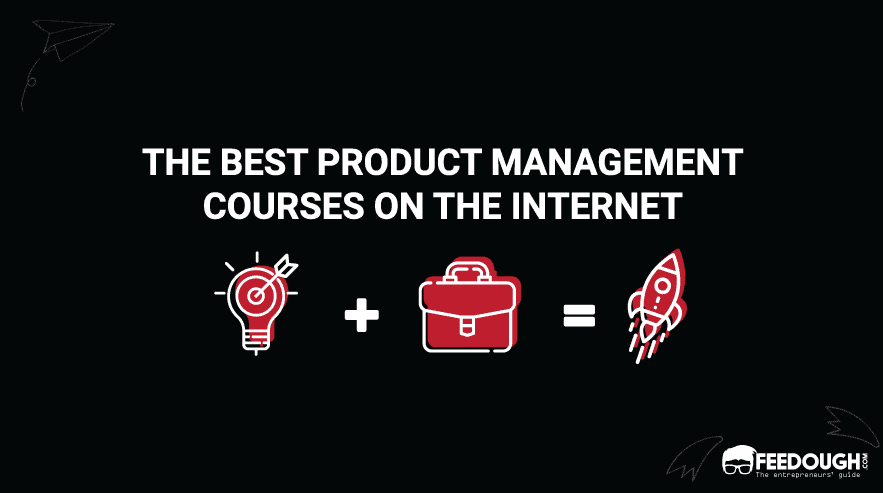

![Go-To-Market Strategy [The Ultimate Guide] go-to-market strategy](https://www.feedough.com/wp-content/uploads/2019/10/go-to-market-strategy.webp)
![What Is Brand Strategy & How To Develop One? [Ultimate Guide] BRAND STRATEGY](https://www.feedough.com/wp-content/uploads/2019/11/BRAND-STRATEGY.webp)
